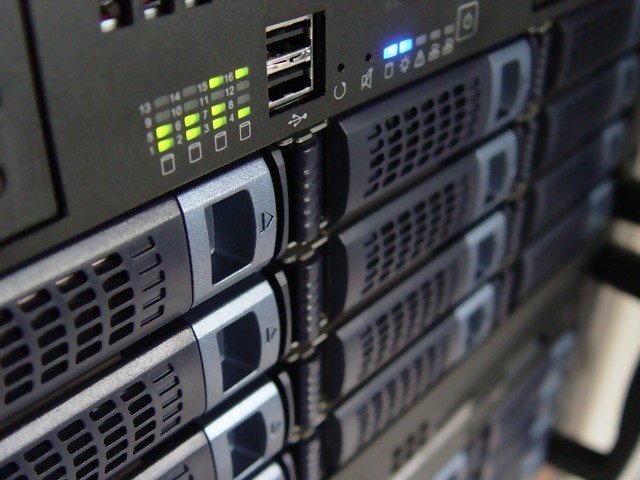Companies today are struggling more and more with the cost of IT equipment. More and more capital is needed to keep up with the latest technology and to be able to offer employees modern and effective workplaces. The use of a VDI (Virtual Desktop Infrastructure) can be an economically interesting alternative. It reduces the cost of expensive and fast computers on site and the use of technicians for the maintenance of the systems. It offers companies more security and creates the best conditions for steady growth.
What is a VDI (Virtual Desktop Infrastructure)?
The basic idea behind the VDI is to reduce the cost of PCs at workplaces. The biggest expenses for IT technology arise from ever-increasing demands on the performance and equipment of the computers at the individual workplaces. Each update of the operating system or other software places higher demands on the technology, so that the hardware cycles become ever-shorter and the maintenance expenditure ever larger.
With the VDI, the computing power and the storage processes are taken over by a central server. The function of the workstation computers is provided via a central service. The actual computing power is provided by the server, which must also meet the hardware requirements of the software. The equipment of the PCs at the workstations then no longer plays a role. Older devices can be used further and with new acquisitions much more favorable devices can be bought. The provision of new jobs becomes cheaper and supports growth.
With the virtual desktop Infrastructure, the local computers are only used as an interface to the server. The monitor, keyboard and mouse operate the software directly on the server and are no longer dependent on their own computing power and constant modernization. In virtual networks, the individual workstations are referred to as clients for which the server provides a virtual user interface.
In the VDI, the workstation computers are divided into three types:
- Fat Clients
- thin clients
- Zero Clients
Fat Clients are normal computers, as they are used in many offices. They can be used as part of a virtual network, but still have the ability to run local programs and run as stand-alone computers. For use as a client in a virtual network, no large computing power is required from the workstation computer. This means that older devices can continue to be used in the network without speed problems.
Thin clients are computers with reduced performance that are normally only used in visual networks. They usually no longer have a hard disk or drives. These computers usually don’t need fans anymore. They do not make any noise and are therefore particularly suitable for use in offices.
Zero clients have only the minimum requirements to be used as a client in a VDI. They are characterized by low power consumption and are more cost-effective than normal PCs. The life expectancy of these devices is longer than normal PCs because they are less stressed and have fewer components.
The Advantages of VDI for your Business
Globalization is forcing companies to offer their employees efficient and timely jobs. However, the demands are growing faster and faster due to technical progress and the costs for IT technology are becoming more and more difficult to plan. The actual usable cycle of computers is getting smaller and smaller. A VDI offers companies the advantage of being able to better plan the costs for the technical requirements.
However, the use of VDI offers companies even more advantages:
Data security
With a virtual desktop infrastructure, all data is stored on the server, which then also makes the necessary backup copies. No more important data is stored on the individual workstations that could endanger the company processes in the event of a technical problem.
However, one of the biggest advantages of virtual infrastructures is the reduction of potential threats. Computer viruses can no longer be introduced into the system, consciously or unconsciously, by individual users because local data is no longer accessed. Pure workstation computers in a VDI no longer need drives or interfaces, which can pose a potential danger to the entire system. The user no longer has the possibility to install his own software and expose the important data to unnecessary dangers. Virus programs or firewalls are no longer required on the individual workstations. In a VDI, data security planning is limited exclusively to the server.
Downtimes
Since the workstations in a virtual network no longer have to perform important tasks or store data, they can be replaced by other computers at any time. If necessary, any other computer can take over the tasks in a very short time. In the event of a technical problem, the employees can be provided with a functional workstation again in a very short time. The downtimes can thus be considerably reduced.
Software updates and the commissioning of new software are also reduced to a minimum. All these processes take place on the server and employees often don’t even notice when the software has been updated.
Reduced maintenance costs
In a virtual network, the workstations become simple input and output devices that use the virtual workstation of the server. The maintenance of the software can be performed completely by the server and the maintenance of the workstations is limited only to the hardware. Problems caused by incorrect operation or installation of software on the workstations are completely avoided. On the virtual interfaces, users can only use the software provided by the server for the performance of their work. The virtual workstations are configured on the server and can be aligned to the requirements of the individual workstations if required. Employees are only given access to the software they actually need for efficient work design.
Advantages of VDI: Flexibility
The individual workstations can be individually set up on the server and adapted to each employee and purpose, or even offered as a standard package. These can then be used by almost any desktop computer or mobile device as long as there is a connection to the network. The connection can be provided through a local network solution or through the Internet. The connection only needs to provide the minimum bandwidth, latency, and response time requirements required for sufficient workflow. The required capacities depend on the required software and its demand for computing power and transmission speeds. The specialists at oneclick will be happy to provide you with information about the various possibilities and how your company can best benefit from this technology.
Optimized cost planning
When the prerequisites for a virtual network are in place, cost planning for IT technology can be simplified. Since the computers become much cheaper for the individual workstations and the updates refer only to the server, the cost calculation becomes much simpler. The cost of creating new jobs will be much cheaper and the effort will be much less.
For whom is a VDI solution suitable?
The concept of desktop virtualization is relatively new, but demand is still very high. The advantages of VDI pay off especially for companies that have complex demands on their workplaces. These can be large companies, but also start-ups whose demands on IT technology are constantly increasing. Depending on your configuration and vendor, virtual networks can grow with your business needs without having to replace a number of desktops, resulting in high costs and downtime. oneclick can help you develop the personal VDI that fits your business needs and helps your business grow.








